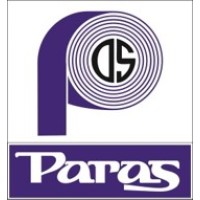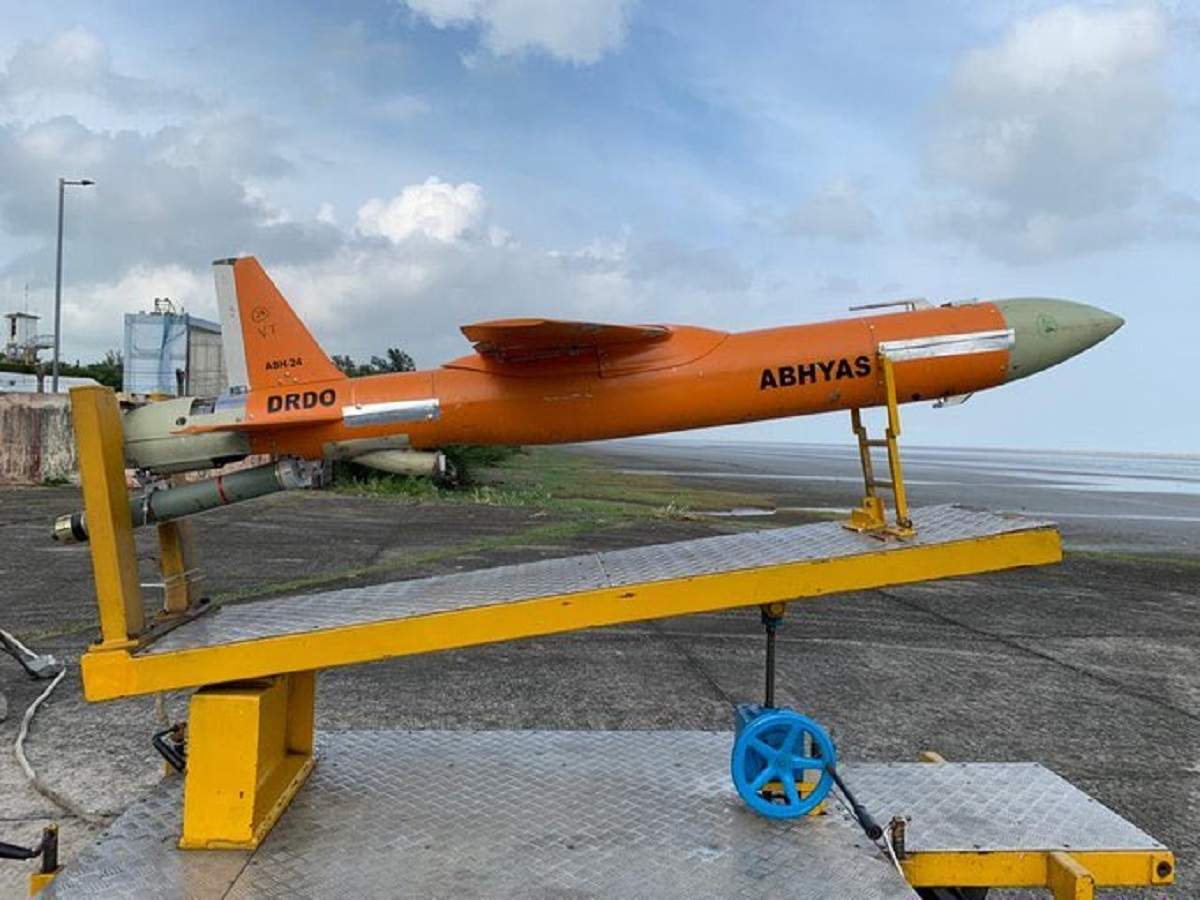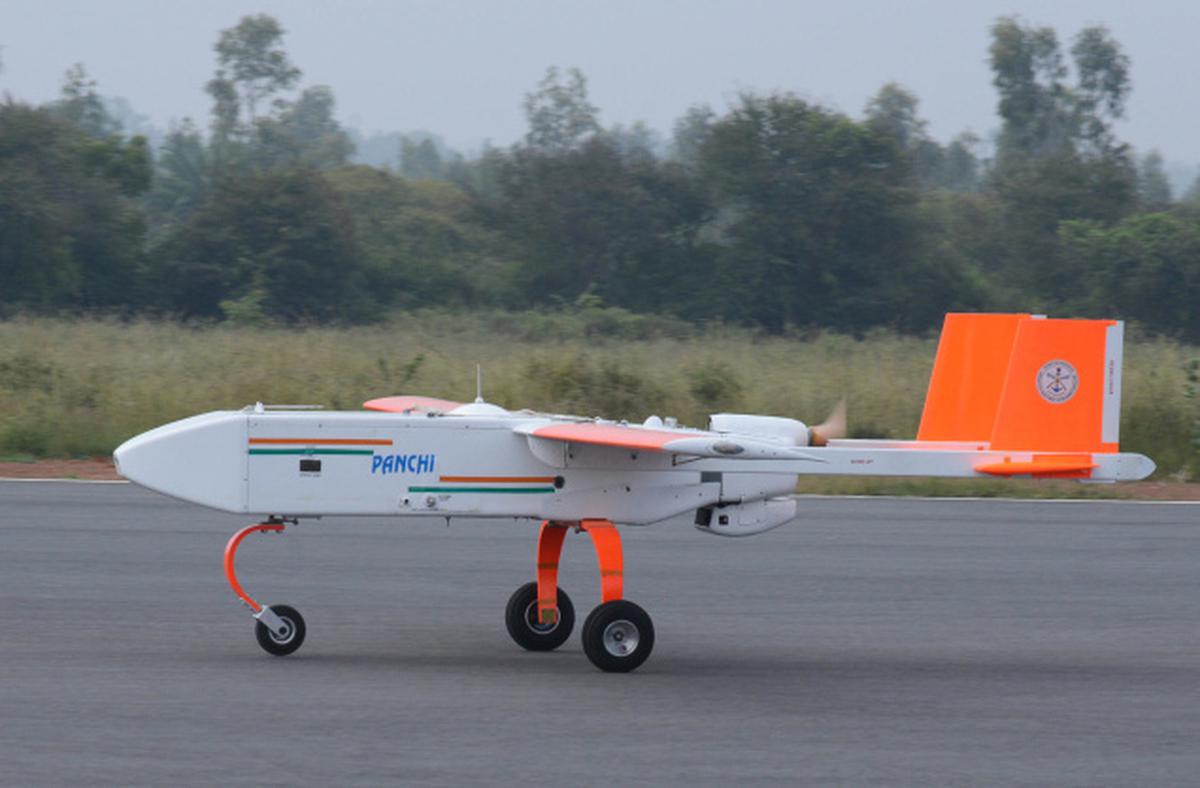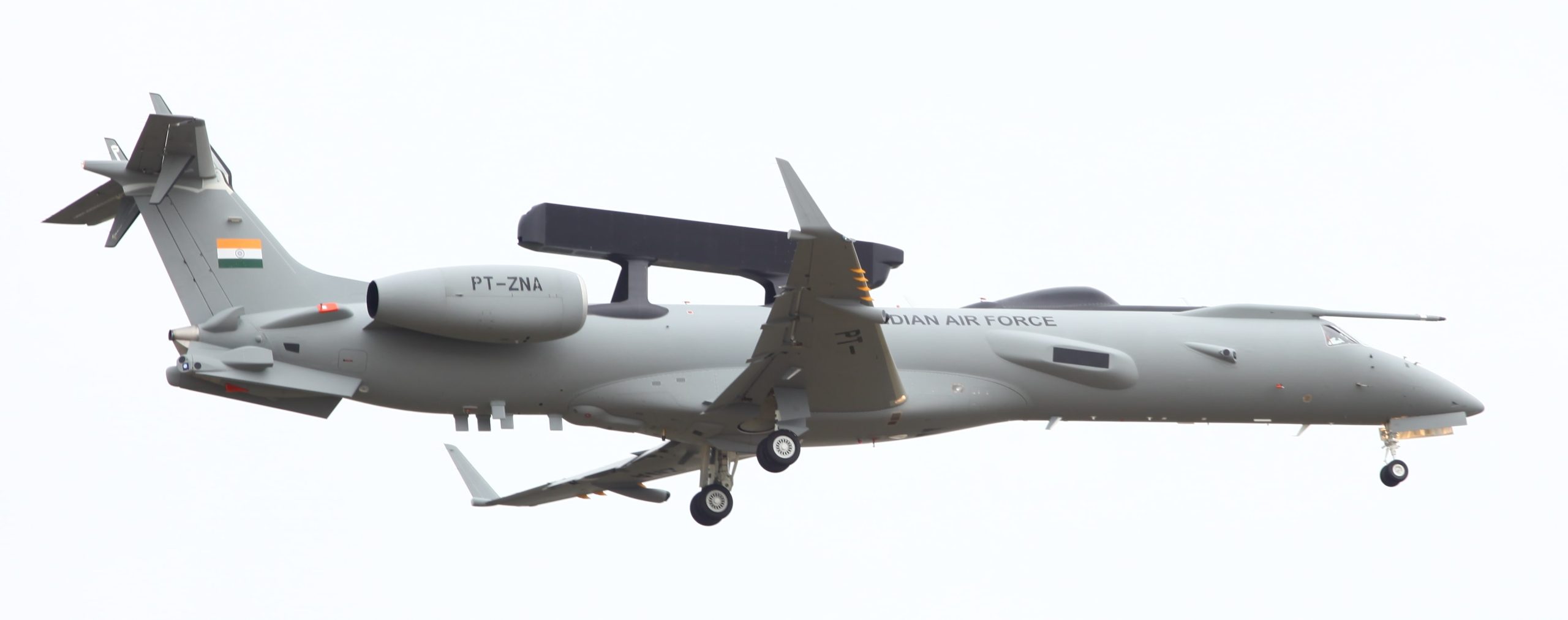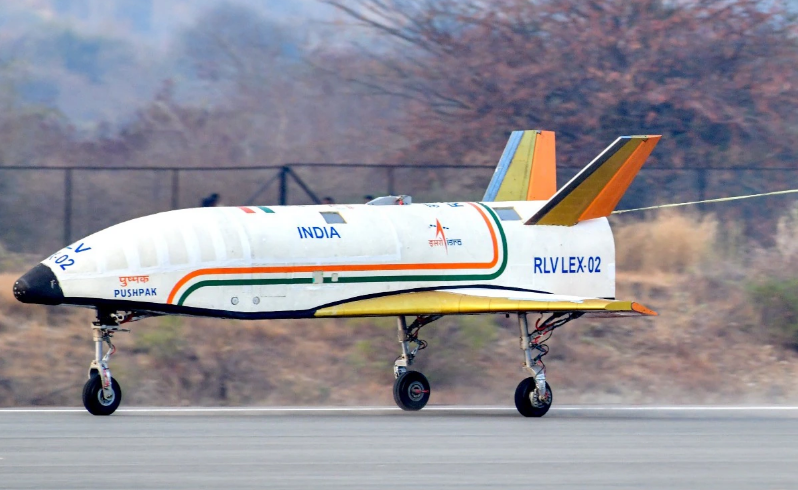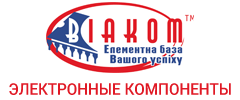Новини світу мікро- та наноелектроніки
Servotech Renewable Power System Limited for Q3FY25 reports consolidated 315% revenue growth & registers 616.8% increase in Profits
Servotech Renewable Power System Ltd. (Formerly known as Servotech Power Systems Ltd.) (NSE: SERVOTECH), India’s largest manufacturer of Electric Vehicle (EV) chargers, and a leading provider of Solar solutions, EV Charger components and Power-Backup solutions, presented its quarterly financial results for the quarter and nine months ended 31st December, 2024 at its Board of Directors meeting on 21st January, 2025.
FINANCIAL HIGHLIGHTS Consolidated- Total Revenue witnessed stellar growth of 3% in Q3 FY25 to Rs. 21,683.2 lacs from Rs. 5,220.6 lacs in Q3 FY24
- EBITDA increased by 1% from Rs. 321.6 lacs in Q3 FY24 to Rs. 1,672.8 lacs in Q3 FY25
- PBT stood at 1,282.5 lacs in Q3 FY25, compared to Rs. 185.8 lacs in Q3 FY24, witnessing a growth of 590.2%
- PAT stood at 798.7 lacs in Q3 FY25, compared to Rs. 111.4 lacs in Q3 FY24, witnessing a growth of 616.8%
- In terms of 9M performance, total revenue increased by 1% and stood at Rs. 52,934.0 lacs in 9M FY25 compared to Rs. 21861.0 lacs in 9M FY24
- EBITDA increased by 1% from Rs. 1,631.5 lacs in 9M FY24 to Rs. 4,455.9 lacs in 9M FY25
- PAT increased by 1% and stood at Rs. 2,371.9 lacs in 9M FY25 compared to Rs. 834.8 lacs in 9M FY24, margins improved to 4.5% from 3.8% during the same period
- Total Revenue witnessed stellar growth of 8% in Q3 FY25 to Rs. 18,185.7 lacs from Rs. 4,984.5 lacs in Q3 FY24.
- EBITDA increased by0% from Rs. 318.6 lacs in Q3 FY24 to Rs. 1,698.1 lacs in Q3 FY25
- PBT stood at 1,309.4 lacs in Q3 FY25, compared to Rs. 182.9 lacs in Q3 FY24, witnessing a growth of 616.0%
- PAT stood at 829.7 lacs in Q3 FY25, compared to Rs. 109.2 lacs in Q3 FY24, witnessing a growth of 659.8%
- In terms of 9M performance, total revenue increased by 6% and stood at Rs. 46,236.9 lacs in 9M FY25 compared to Rs. 18,601.6 lacs in 9M FY24
- EBITDA increased by 8% from Rs. 1,596.7 lacs in 9M FY24 to Rs. 4,499.9 lacs in 9M FY25
- PAT increased by 3% and stood at Rs. 2,441.8 lacs in 9M FY25 compared to Rs. 813.0 lacs in 9M FY24, margins improved to 5.3% from 4.4% during the same period
Commenting upon the results, Raman Bhatia, Managing Director, Servotech Renewable Power System Ltd. (Formerly known as Servotech Power Systems Ltd.) said, “The quarter experienced stellar growth, fueled by our unwavering commitment to delivering cutting-edge, technology-driven solutions in electric vehicles and solar energy. As a market leader in India’s EV charging sector, currently holding a 35-40% market share, we are strategically positioned to capture 50-55% by manufacturing 12,000 DC fast chargers in FY25, meeting the rapidly surging demand for EV infrastructure. EV chargers are projected to constitute 70-75% of our total revenue, with solar products contributing the remaining portion. This dual-pronged focus on innovation reflects our dedication to creating long-term value for our stakeholders while simultaneously contributing to a sustainable future. The trust and enthusiasm of our customers and shareholders inspire us to push boundaries and set higher benchmarks. We are optimistic about the future and committed to driving growth and establishing ourselves as a global leader in renewable energy and smart energy solutions.”
The post Servotech Renewable Power System Limited for Q3FY25 reports consolidated 315% revenue growth & registers 616.8% increase in Profits appeared first on ELE Times.
Top 10 UAV Companies in India
India’s unmanned aerial vehicle (UAV) industry has emerged as a global hotspot for innovation and technological advancement, driven by rapid adoption across defense, agriculture, infrastructure, and surveillance sectors. With a strong focus on indigenization and cutting-edge research, Indian UAV companies are not only meeting domestic demands but also establishing a significant presence in international markets. As of January 2025, several Indian firms have taken the lead in developing advanced drone solutions, offering a range of applications tailored to meet diverse operational requirements.
This article highlights the top 10 UAV companies in India that are shaping the future of drone technology and revolutionizing industries with their innovative offerings.
- ideaForge Technology Limited: Established in 2007, ideaForge is a prominent UAV manufacturer based in Mumbai. The company designs and develops drones for mapping, security, and surveillance applications, catering to defense forces and various government departments. In July 2023, ideaForge successfully launched its initial public offering (IPO), marking a significant milestone in its growth trajectory.
2. Asteria Aerospace: Asteria Aerospace is a key player in the Indian drone industry, focusing on the development of UAVs for various applications, including defense and industrial sectors. The company offers a range of drone solutions tailored to meet specific operational requirements.
3. Zen Technologies: Specializing in defense training solutions, Zen Technologies has expanded into the UAV market, providing drones and related systems for military applications. The company’s expertise in simulation and training complements its UAV offerings.
4. Paras Defence and Space Technologies: Paras Defence is involved in the design, development, and manufacturing of a wide range of defense and space engineering products, including UAVs. The company serves various segments of the Indian defense industry, contributing to the nation’s strategic capabilities.
5. Garuda Aerospace: Garuda Aerospace is a Chennai-based company that provides drone-based solutions across multiple sectors, including agriculture, infrastructure, and surveillance. The company focuses on delivering cost-effective and efficient UAV services.
6. Aarav Unmanned Systems: Aarav Unmanned Systems focuses on providing drone solutions for industrial applications, including mining, urban planning, and agriculture. The company’s UAVs are designed to deliver high-quality data for decision-making processes.
7. Dhaksha Unmanned Systems: Dhaksha Unmanned Systems offers a variety of UAVs for applications such as agriculture, surveillance, and logistics. The company emphasizes indigenous design and manufacturing to cater to local and international markets.
8. Marut Drones: Marut Drones provides drone-based solutions focusing on environmental and agricultural applications. The company develops UAVs aimed at improving efficiency in sectors like crop management and afforestation.
9. SkyLark Drones is a Bengaluru-based drone technology company specializing in providing end-to-end drone solutions for industrial applications. Founded in 2014, the company leverages drone-based data to drive operational efficiencies and decision-making across sectors such as infrastructure, mining, agriculture, and energy. SkyLark Drones offers services including drone mapping, surveying, and aerial analytics, supported by a proprietary platform that transforms drone-captured data into actionable insights.
10. Adani Defence & Aerospace: As a division of Adani Enterprises, Adani Defence & Aerospace has ventured into UAV manufacturing through collaborations and acquisitions. Notably, the company has set up a manufacturing facility for unmanned aerial vehicles in Hyderabad, Telangana, in partnership with Elbit Systems.
The post Top 10 UAV Companies in India appeared first on ELE Times.
A closer look at LLM’s hyper growth and AI parameter explosion

The rapid evolution of artificial intelligence (AI) has been marked by the rise of large language models (LLMs) with ever-growing numbers of parameters. From early iterations with millions of parameters to today’s tech giants boasting hundreds of billions or even trillions, the sheer scale of these models is staggering.
Table 1 outlines the number of parameters in the most popular LLMs today.

Table 1 The number of parameters in today’s most popular LLMs reaches into the billions if not trillions. Source: VSORA
To understand why leading-edge LLMs are scaling so rapidly, we must explore the relationship between parameters, performance, and the technological advancements driving this trend.
Role of parameters in language models
In neural networks, parameters represent the weights and biases that the model captures and modifies. They are analogous to synaptic connections in the human brain.
From a computational architecture perspective, parameters act as the model’s memory, storing the complex relationships and subtle nuances within the input data. Intuitively, an increase in the number of parameters in a language model translates to enhanced ability to understand context, generate coherent text, and even perform tasks for which they were not explicitly trained.
Today, the largest models exhibit behaviors such as advanced reasoning, creativity, and the ability to generalize across diverse domains, reinforcing the notion that scaling up is essential for pushing the boundaries of what AI can achieve.
Scaling laws and diminishing returns
Early LLMs demonstrated that increasing the size of models led to predictable improvements in performance, especially when paired with larger datasets and superior computational power. However, these improvements follow a diminishing returns curve. As models grow larger, the incremental benefits become smaller, requiring exponentially more resources to achieve significant gains.
Despite this, the race to build bigger models persists because the returns, while diminishing, remain valuable for high-stakes applications. For instance, in areas like medical diagnostics, scientific research and autonomous systems, even marginal improvements in AI performance can have profound implications.
Drivers of parameter explosion
Modern LLMs are trained on vast and diverse datasets encompassing entire libraries of books, research papers, studies, analyses of a wide range of human endeavors, extensive software code repositories, and many more data sources. The breadth of these datasets necessitates larger models with billions of parameters to fully exploit the richness of the data.
Multimodal capabilities
Leading-edge LLMs are not limited to processing text alone; many are designed to handle multimodal inputs, integrating text, images, and other types of data. Expanding the parameter count allows these models to process and draw connections between various data types, thus enabling them to perform tasks that involve more than one type of input—such as image captioning, generating audio responses, and cross-referencing visual data with textual information.
The trend toward multimodal capabilities requires a significant increase in parameters to manage the added complexity. The added computational storage enables richer representations of different data modalities and deeper cross-modal understanding, making these models more versatile and valuable for practical applications.
Zero-shot/few-shot learning
One standout advancement in LLMs has been their proficiency in zero-shot and few-shot learning. These models can perform new tasks with minimal examples or even without explicit task-specific training. GPT-3 popularized this capability, showing that an appropriately large model could infer task instructions from just a few examples.
Achieving this level of generalization requires a massive number of parameters so that the model can encode a wide variety of linguistic and factual knowledge into its architecture. This capability is particularly useful in real-world applications where training data may not be available for every conceivable task. Expanding parameter counts helps LLMs build the necessary knowledge and contextual flexibility to adapt to various tasks with minimal guidance.
The competitive AI landscape
The competitive nature of AI research and development also fuels parameter explosion. Companies and research institutions strive to outdo each other in developing state-of-the-art models with more impressive capabilities.
The metric of “parameter count” has become a benchmark for gauging the power of an LLM. While sheer size is not the sole determinant of a model’s effectiveness, it has become an important factor in competitive positioning, marketing, and funding within the AI field.
Challenges in computational power and training infrastructure
The dramatic rise in parameter counts for AI models would not have been possible without parallel advancements in computational power and the supporting infrastructure. For decades, AI progress was hindered by the limitations of the central processing unit (CPU), the dominant computing architecture since its inception in the late 1940s. CPUs, while versatile, are inefficient at parallel processing, a critical capability for training modern AI systems.
A turning point occurred about a decade ago with the adoption of graphics processing units (GPUs) for executing deep neural networks. Unlike CPUs, GPUs are designed for efficient parallel computation, enabling rapid acceleration in AI capabilities.
Today, LLMs leverage distributed training across thousands of GPUs or specialized hardware such as tensor processing units (TPUs), combined with optimized software frameworks. Innovations in cloud computing, data parallelism, and sophisticated training algorithms have made it feasible to train models containing hundreds of billions of parameters.
Techniques like model parallelism and efficient gradient-based optimization have further advanced the field by distributing training tasks across multiple processors and clusters.
However, while larger parameter counts unlock unprecedented potential, they also bring significant challenges, chief among them being the soaring hardware computing resource demands. These demands inflate the total cost of ownership, encompassing not only sky-high upfront hardware acquisition costs but also steep operational and maintenance expenses.
Training vs. inference
Training: A computational beast
Training involves processing massive amounts of unstructured data to achieve accurate results, regardless of how long the task takes. It’s an extremely computationally intensive process, often reaching performance levels in the ExaFLOPS range.
Achieving these results typically demands months of continuous 24/7 operation on cutting-edge hardware. Today, this is conducted on thousands of GPUs, installed on large boards in vast numbers only available in the largest data centers. These setups come at enormous costs, but they are essential investments as no viable alternative exists at present.
Inference: A different approach
Inference operates under a distinct paradigm. While high performance remains critical, whether conducted in the cloud or at the edge, inference typically handles smaller, more targeted datasets. The primary objectives are achieving fast response times (low latency), minimizing power consumption, and reducing acquisition costs. These attributes make inference a more cost-effective and efficient process compared to training.
In data centers, inference is still executed using the same hardware designed for training—an approach that is far from ideal. At the edge, a variety of solutions exist, some outperforming others, but no single offering has emerged as a definitive answer.
Rethinking inference for the future
Optimizing inference requires a paradigm shift in how we approach three interconnected challenges:
- Reducing hardware requirements
- Accelerating latency
- Enhancing power efficiency
Each factor is critical on its own but achieving them together is the ultimate goal for driving down costs, boosting performance, and ensuring sustainable scalability.
Reducing hardware requirements
Lowering the amount of hardware needed for inference directly translates to reduced acquisition costs and a smaller physical footprint, making AI solutions more accessible and scalable. Achieving this, however, demands innovation in computing architecture.
Traditional GPUs, today’s cornerstone of high-performance computing, are reaching their limits in handling the scaling of AI models. A purpose-built architecture can significantly reduce the hardware overhead by tailoring design to the unique demands of inference workloads, delivering higher efficiency at lower costs.
Accelerating latency
Inference adoption often stalls when query response times (latencies) fail to meet user expectations. High latencies can disrupt user experiences and erode trust in AI-driven systems, especially in real-time applications like autonomous driving, medical diagnostics, or financial trading.
The traditional approach to reducing latency—scaling up hardware and employing parallel processing—inevitably drives up costs, both upfront and operational. The solution lies in a new generation of architectures designed to deliver ultra-low latencies intrinsically, eliminating the need for brute-force scaling.
Enhancing power efficiency
Power efficiency is not just an operational imperative; it is an environmental one. Energy-intensive AI systems contribute to rising costs and a growing carbon footprint, particularly as models scale in size and complexity. To address this, inference architectures must prioritize energy efficiency at every level, from the processor core to the overall system design.
Breaking through the memory wall
At the core of these challenges lies a shared bottleneck: the memory wall. Even with the rapid evolution of processing power, memory bandwidth and latency remain significant constraints, preventing full utilization of available computational resources. This inefficiency is a critical obstacle to achieving the simultaneous reduction in hardware, acceleration of latency, and improvement in power efficiency.
Transformation of AI systems
The rapid expansion of parameters in cutting-edge LLMs reflects the industry’s unyielding drive for superior performance and enhanced capabilities. While this progress has unleashed groundbreaking possibilities, it has also exposed critical limitations in current processing hardware.
Addressing these challenges holistically will open the path forward to wide adoption of inference as a seamless, scalable process that performs equally well in both cloud and edge environments.
In 2025, innovative solutions are expected to redefine the hardware landscape, paving the way for more efficient, scalable, and transformative AI systems.
 Lauro Rizzatti is a business advisor to VSORA, a startup offering silicon IP solutions and chips. He is a verification consultant and industry expert on hardware emulation.
Lauro Rizzatti is a business advisor to VSORA, a startup offering silicon IP solutions and chips. He is a verification consultant and industry expert on hardware emulation.
Related Content
- Solving AI’s Power Struggle
- How to Make Generative AI Greener
- Key technologies push AI to the edge
- AI Inference: Unveiling the Future of Neural Processing
- Deep learning model optimization reduces embedded AI inference time
The post A closer look at LLM’s hyper growth and AI parameter explosion appeared first on EDN.
StratEdge partners with Vitale Engineering as manufacturer’s representative for Upstate New York
Electronic Sensors Market Revolutionizing Industries with Cutting-Edge Innovations and Future Growth Potential
The Electronic Sensors Market has seen a significant transformation in recent years, driven by cutting-edge technological innovations and a surge in demand across various industries. From healthcare and automotive to consumer electronics and industrial applications, the role of electronic sensors has expanded beyond traditional uses. These sensors are pivotal in the development of smarter devices and systems, ultimately shaping the future of industries worldwide.
The global Electronic Sensors Market is projected to reach US$ 52.6 billion by 2032, up from US$ 22.8 billion in 2022, reflecting a robust CAGR of 8.7% throughout the forecast period.
According to the global electronic sensors market is projected to experience substantial growth over the coming years, presenting numerous opportunities for manufacturers, investors, and businesses looking to capitalize on the evolving market dynamics.
The Growing Demand for Electronic SensorsThe increasing adoption of smart technologies and the Internet of Things (IoT) is one of the primary factors contributing to the rise in demand for electronic sensors. As IoT-connected devices become more prevalent, the need for sensors capable of measuring, detecting, and responding to various environmental and physical changes has grown substantially. From temperature and pressure sensors to motion and proximity sensors, electronic sensors are integral components of modern devices and systems, enhancing functionality and user experience.
The healthcare industry, in particular, has been a major adopter of electronic sensors. With the advent of wearable devices, such as smartwatches and fitness trackers, sensors play a critical role in monitoring vital signs, including heart rate, blood oxygen levels, and body temperature. This trend is also expanding into more advanced healthcare applications, such as remote patient monitoring and diagnostic systems, enabling real-time health data collection and improving patient care.
Similarly, the automotive industry is undergoing a significant transformation, with electronic sensors being at the forefront of advancements in autonomous vehicles, driver-assistance systems, and electric vehicles. Sensors are vital for functions such as collision detection, lane departure warning, and adaptive cruise control, making driving safer and more efficient. As electric vehicles (EVs) continue to gain traction globally, the demand for advanced electronic sensors for battery management systems and energy optimization is expected to rise.
Innovations Driving Market GrowthInnovation has been the key driver behind the continuous expansion of the electronic sensors market. The rise of miniaturization, improved sensor accuracy, and enhanced energy efficiency are some of the key technological advancements propelling the market forward. Manufacturers are increasingly focusing on developing sensors that are smaller, more efficient, and capable of operating in harsher environments.
In particular, mems (Microelectromechanical systems) sensors have gained widespread adoption due to their compact size, low cost, and versatility. These sensors are used in a wide range of applications, from mobile phones and wearable devices to industrial machinery and automotive systems. MEMS sensors are enabling more sophisticated devices and systems, enhancing their overall performance and functionality.
Moreover, the integration of sensors with AI and machine learning technologies is paving the way for more intelligent sensing systems. AI-driven sensors can not only collect data but also analyze and interpret it in real time, allowing for predictive maintenance, smarter decision-making, and improved operational efficiency across industries. This is particularly evident in industrial automation, where sensors equipped with AI can detect anomalies in machinery, predict failures, and optimize manufacturing processes.
The growing focus on environmental sustainability is another factor accelerating sensor innovation. Sensors that monitor air quality, water pollution, and carbon emissions are gaining popularity as governments and organizations seek ways to mitigate environmental impact. Additionally, there is increasing demand for sensors that contribute to energy efficiency, such as those used in smart homes and buildings for optimizing energy consumption.
Key Market Drivers and ChallengesThe Electronic Sensors Market is being driven by several key factors. One of the primary drivers is the rapid advancement of IoT technologies, which rely heavily on sensors to collect and transmit data. As IoT applications expand across sectors, from smart homes and agriculture to supply chain management and logistics, the demand for sensors is expected to grow at an exponential rate.
Furthermore, the increasing importance of automation and robotics in industries such as manufacturing, logistics, and agriculture is creating a surge in sensor demand. Sensors are essential for the accurate detection of physical and environmental parameters, allowing automated systems to operate efficiently and effectively.
Despite the significant growth prospects, the electronic sensors market faces certain challenges. One of the main hurdles is the complexity involved in integrating sensors into existing systems and technologies. The need for seamless connectivity and data interoperability across multiple devices and platforms requires ongoing innovation and collaboration between sensor manufacturers, software developers, and system integrators.
Additionally, the market is witnessing price sensitivity, with cost-effective solutions being a major consideration for both end-users and manufacturers. While the demand for advanced sensors is growing, price competitiveness remains a critical factor, especially in regions with price-sensitive markets.
Future Growth Potential and Market OpportunitiesLooking ahead, the future of the electronic sensors market is filled with growth potential. The continuous rise in connected devices, the increasing importance of automation, and the demand for more sustainable solutions are expected to drive the expansion of the market. Persistence Market Research anticipates that innovations in sensor technology, combined with the growth of IoT, will fuel market growth in the coming years.
For manufacturers, the future presents numerous opportunities, particularly in areas such as smart manufacturing, healthcare innovation, electric vehicles, and smart cities. As these industries continue to evolve, electronic sensors will remain integral to their success, offering businesses the chance to provide cutting-edge solutions that cater to the growing demand for advanced sensing technologies.
Moreover, emerging markets, particularly in Asia-Pacific, are expected to contribute significantly to the global growth of the electronic sensors market. The rapid industrialization, expanding consumer electronics market, and increasing adoption of IoT technologies in countries such as China and India present significant opportunities for sensor manufacturers to tap into new customer bases.
ConclusionThe Electronic Sensors Market is undergoing rapid innovation and expansion, driven by advances in technology, the growth of IoT, and the increasing demand for smarter, more efficient systems across various industries. As we move forward, the integration of artificial intelligence, machine learning, and sustainability-focused sensors will shape the future of this market, creating new opportunities for growth.
The post Electronic Sensors Market Revolutionizing Industries with Cutting-Edge Innovations and Future Growth Potential appeared first on ELE Times.
EEVblog 1662 - Vintage Tandy 200 Portable Computer Claytons Repair/Teardown
Wolfspeed launches Gen 4 MOSFET technology platform
Microvolts to kilovolts in milliseconds with one I/O pin

Figure 1’s silly-simple voltage-to-time ADC is an exercise in dynamic range. Assuming that it is used with a 10-MHz counter/timer, its resolution is roughly 10 µV per count for inputs around 0 V and 100 mV per count at 1 kV, and it never really over-ranges. The simple trick that provides this multi-decade measurement span is the inherent logarithmic behavior of RC timing networks.
Here’s how this one works.
Wow the engineering world with your unique design: Design Ideas Submission Guide
 Figure 1 U1 works with R1, R2, and C1 to logarithmically digitize 0 kV to 1 kV inputs while tying up only one microcontroller I/O pin.
Figure 1 U1 works with R1, R2, and C1 to logarithmically digitize 0 kV to 1 kV inputs while tying up only one microcontroller I/O pin.
Between conversions, U1’s reset pin 4 is held active-low either by the connected GPIO pin, or by U1 itself. Using a 555 in this self-resetting mode is unusual but is very handy here. This holds the C1 at zero or very near, since the Ron of pin 7’s open-drain FET is typically just 15ohms.
A conversion starts when the I/O pin is programmed for output and pulsed high, overriding U1 pin 3 (Out) and releasing the reset as sketched in Figure 2. The I/O pin is then immediately tri-stated and reprogrammed as input, gating an internal counter/timer peripheral for measurement of the conversion time T.
Because U1’s pin 2 (Trigger) is held low, the end of reset also sets pin 3 high and releases pin 7, allowing C1 to begin to ramp positive. When it reaches the 2.048V (Threshold) voltage on pin 5, conversion will complete and the time T that was required to do so is the conversion result. Arrival of pin 5 at the threshold voltage drives pins 3 (Out) low, thereby both pin 4 (Reset) and GPIO, the latter being the “conversion complete” status bit to the microprocessor. Meanwhile, pin 7 is driven low to discharge C1. This process completes in about 12 µs, readying the converter for another cycle.

Figure 2 A single general-purpose tri-state I/O pin serves to both control and measure U1’s time-out. The pin is programmed for output and pulsed positive to start conversion, then tri-stated for timer input. Conversion time (T) is 10 ms for Vin = 0, decreasing to approximately 100 µs for Vin = 1 kV.
T versus Vin is given by the following equation:
T = C1(R1||R2)*Loge ((0.209Vin + 3.234) / (0.209Vin + 1.1919))
= 10.0ms*Loge ((0.209Vin + 3.234) / (0.209Vin + 1.1919))
This is plotted in Figure 3 for Vin = 10 mV to 1kV.

Figure 3 The conversion time (T) in milliseconds for Vin from 0.01 V to 1000 V.
To recover Vin from a T acquisition, do this:
Vin = (3.234 – 1.1919e(T/10.0ms))/(0.209(e(T/10.0ms) – 1))
Finally, here’s something in the nature of a reality check.
You might be wondering why R1 is shown as a series connection of four 1M resistors instead of a single 4M component. The answer is the somewhat obvious fact that 1 kV is some serious voltage and the somewhat less obvious fact that resistors, somewhat like capacitors, have voltage ratings. Resistors rated for 1 kV are not the usual breed of cat.
And speaking of cats, please remember the old story about what curiosity did to one unfortunate feline and consider that prudent and proper safety practices are literally vital when choosing to work with voltages of this magnitude.
Me–OW!
Stephen Woodward’s relationship with EDN’s DI column goes back quite a long way. Over 100 submissions have been accepted since his first contribution back in 1974.
Related Content
- Add one resistor to give bipolar LM555 oscillator a 50:50 duty cycle
- More gated 555 astable multivibrators hit the ground running
- Gated 555 astable hits the ground running
- Inverted MOSFET helps 555 oscillator ignore power supply and temp variations
The post Microvolts to kilovolts in milliseconds with one I/O pin appeared first on EDN.
The rise of MCU-enabled sensor designs

New MCUs are addressing fundamental challenges in sensor technology by offering ample memory, a rich set of interfaces, and most importantly, the ability to run intelligent software algorithms. The key enablers include incorporation of sensing-supportive processor cores and MEMS integration with MCUs.
Read full story at EDN’s sister publication, Planet Analog.
Related Content
- What’s Next for the Microcontroller?
- Sensor-fusion MCU kit from STMicroelectronics
- Air sensing module boasts 7 sensors, MCU and AI firmware
- New sensor and MCU technology are key to next-gen robots
- Microcontroller-based temperature sensors – Accuracy considerations
The post The rise of MCU-enabled sensor designs appeared first on EDN.
UK’s North East advanced material electronics sector to contribute over 7000 jobs and nearly £900m gross value-added in next five years
First Solar endows Missouri S&T professorship in Critical Energy Materials
Dominating the Skies: DRDO’s UAV Revolution
From the high-altitude surveillance of the Himalayas to the tactical maneuvering on the border, DRDO-developed drones and UAVs are silently shaping the contours of India’s defense. This article delves into the impressive array of unmanned systems born from the ingenuity of DRDO, exploring their diverse roles, cutting-edge technologies, and the strategic impact they have on India’s evolving security landscape.
- Rustom Series
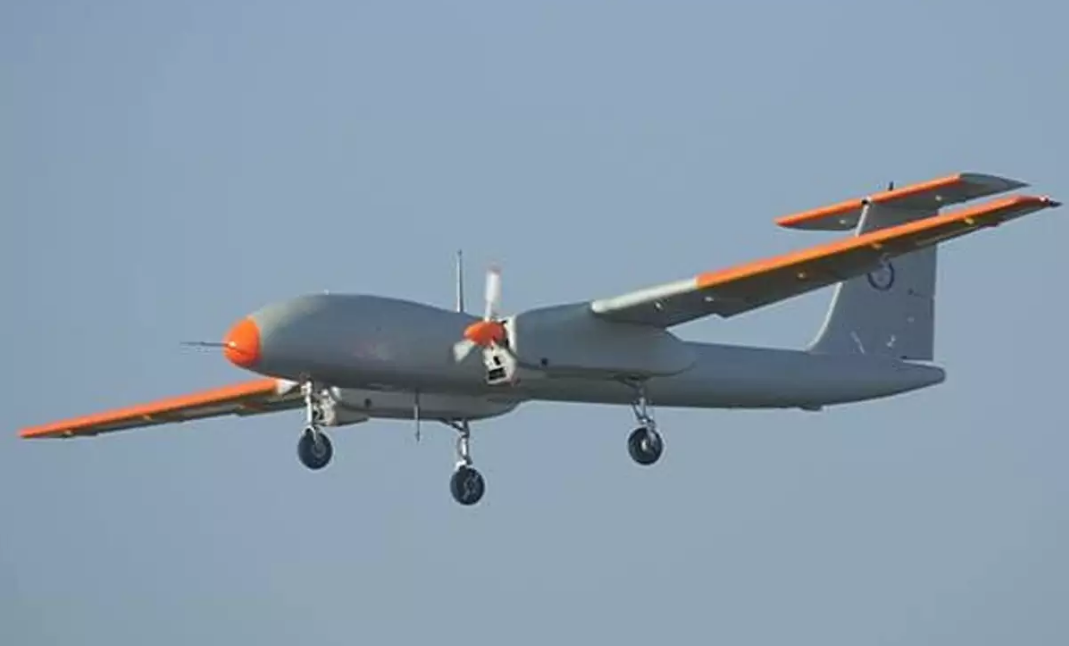 The Rustom series represents DRDO’s flagship UAV program, inspired by the National Aeronautical Laboratory’s (NAL) earlier designs. The series is named after Rustom Damania, a pioneer in Indian aerospace engineering. The Rustom series includes multiple variants tailored to specific missions:
The Rustom series represents DRDO’s flagship UAV program, inspired by the National Aeronautical Laboratory’s (NAL) earlier designs. The series is named after Rustom Damania, a pioneer in Indian aerospace engineering. The Rustom series includes multiple variants tailored to specific missions:
- Rustom-I:
- Type: Medium-Altitude Long-Endurance (MALE) UAV
- Primary Use: Intelligence, Surveillance, and Reconnaissance (ISR)
- Key Features:
- Endurance: Up to 12 hours
- Payload capacity: 75 kg
- Operational altitude: 22,000 feet
- Applications: Border surveillance and reconnaissance missions
- Rustom-II (TAPAS-BH-201):
- Type: Advanced MALE UAV
- Primary Use: Long-endurance ISR missions with strike capabilities
- Key Features:
- Endurance: Over 24 hours
- Operational altitude: 35,000 feet
- Payload capacity: Up to 350 kg
- Status: Under extensive testing and trials for integration into the armed forces
- Rustom-H:
- Type: High-Altitude Long-Endurance (HALE) UAV
- Primary Use: Long-term surveillance and strategic ISR missions
- Status: Development phase
- Nishant
The Nishant series is a tactical Unmanned Aerial Vehicle (UAV) developed by India’s Defence Research and Development Organisation (DRDO). Specially designed for intelligence, surveillance, and reconnaissance (ISR) roles, Nishant was equipped with advanced electro-optic and infrared sensors. Launched via a hydro-pneumatic rail system, it played a crucial role in counter-insurgency and battlefield surveillance. Widely recognized for its operational effectiveness, Nishant marked a significant step in indigenous UAV development before being phased out for more advanced systems.
- Type: Tactical UAV
- Primary Use: Short-range ISR and battlefield surveillance
- Key Features:
- Launched via a mobile hydro-pneumatic rail launcher
- Payload: Electro-optic and infrared sensors
- Range: 160 km
- Endurance: 4.5 hours
- Notable Deployment: Widely used during counter-insurgency and border monitoring operations
- Status: Retired, replaced by more advanced systems
- Lakshya
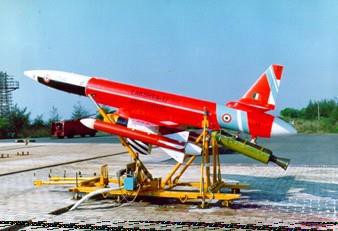 Lakshya is an advanced pilotless target aircraft developed to meet the needs of high-performance aerial target systems. Designed for simulating enemy threats during combat training and weapon evaluation, Lakshya offers remarkable versatility with features like remote control, pre-programmed flight paths, and high maneuverability. Its upgraded version, Lakshya-2, enhances operational capabilities, ensuring accurate replication of evolving aerial threats. This indigenously developed system underscores India’s prowess in defense technology innovation and continues to serve as a critical asset in the nation’s defense arsenal.
Lakshya is an advanced pilotless target aircraft developed to meet the needs of high-performance aerial target systems. Designed for simulating enemy threats during combat training and weapon evaluation, Lakshya offers remarkable versatility with features like remote control, pre-programmed flight paths, and high maneuverability. Its upgraded version, Lakshya-2, enhances operational capabilities, ensuring accurate replication of evolving aerial threats. This indigenously developed system underscores India’s prowess in defense technology innovation and continues to serve as a critical asset in the nation’s defense arsenal.
- Type: High-speed target drone
- Primary Use: Aerial target for training and weapon calibration
- Key Features:
- Operational altitude: 30,000 feet
- Speed: 0.7 Mach
- Applications: Simulating enemy aircraft for live-fire training
- Status: In active service, with multiple upgrades
- Abhyas
The DRDO Abhyas is an advanced high-speed expendable aerial target (HEAT) developed by the Defence Research and Development Organisation (DRDO) of India. Designed to simulate a variety of aerial threats for weapons testing and training, Abhyas features a radar cross-section (RCS) enhancer, an acoustic miss distance indicator (AMDI), and the ability to replicate different threat profiles. Launched using a twin-booster system, it operates on a gas turbine engine, offering high endurance and maneuverability. Abhyas exemplifies India’s commitment to indigenous defense technology development, supporting robust and realistic training scenarios for the armed forces.
- Type: High-speed expendable aerial target (HEAT)
- Primary Use: Testing surface-to-air and air-to-air missile systems
- Key Features:
- Turbojet engine for extended performance
- Maximum altitude: 5 km
- Applications: Weapon evaluation and air defense training
- Status: Under induction and operational use
- Panchi
- Type: Wheeled version of the Nishant UAV
- Primary Use: ISR operations with a runway-based takeoff and landing capability
- Key Features:
- Enhanced flexibility compared to Nishant
- Longer endurance due to reduced launch constraints
- Netra (Developed in collaboration with IdeaForge)
The DRDO Netra is India’s indigenous Airborne Early Warning and Control (AEW&C) system. Mounted on an Embraer EMB-145 platform, Netra features advanced radar and surveillance systems capable of tracking aerial and ground-based targets over a wide range. With a 240-degree coverage and state-of-the-art communication capabilities, it plays a vital role in enhancing situational awareness and supporting tactical operations.
- Type: Mini UAV
- Primary Use: Urban surveillance and crowd monitoring
- Key Features:
- Lightweight quadcopter design
- Real-time video surveillance capability
- Applications: Disaster management, border infiltration monitoring, search and rescue etc.
- Notable Usage: Extensively used during search-and-rescue operations and for monitoring sensitive areas
- Aura (Autonomous Unmanned Research Aircraft)
The AURA program represents India’s ambitious leap into developing an indigenous Unmanned Combat Aerial Vehicle (UCAV). Spearheaded by the Defence Research and Development Organisation (DRDO), AURA is designed for stealth and precision, capable of delivering strategic payloads with minimal detection. Envisioned with advanced composite materials and autonomous systems, it symbolizes a significant advancement in India’s defense technology, aiming to reduce reliance on imports and fortify the nation’s aerial combat capabilities.
- Type: Unmanned Combat Aerial Vehicle (UCAV)
- Primary Use: Stealth operations and precision strikes
- Key Features:
- Design: Flying wing configuration for stealth
- Payload: Precision-guided munitions and ISR equipment
- Status: Development phase with significant potential for high-impact defense missions
- Imperial Eagle
Imperial Eagle is an advanced tactical Unmanned Aerial Vehicle (UAV) developed in collaboration with private industry partners. Designed primarily for surveillance and reconnaissance, the Imperial Eagle is equipped with state-of-the-art sensors and communication systems to support military and paramilitary operations. Its compact design and high endurance make it ideal for monitoring sensitive areas, providing real-time intelligence to enhance operational effectiveness.
- Type: Tactical UAV
- Primary Use: Short-range reconnaissance
- Key Features:
- Lightweight and portable
- Applications: Counter-insurgency and tactical surveillance
- Status: Limited deployment, with potential for scaling
- Pushpak
The NAL/ADE Pushpak is an autonomous Unmanned Aerial Vehicle (UAV) jointly developed by the National Aerospace Laboratories (NAL) and the Aeronautical Development Establishment (ADE), divisions of DRDO. Designed for tactical operations, Pushpak is a lightweight, high-performance UAV primarily intended for surveillance, reconnaissance, and intelligence gathering. With advanced avionics, real-time data transmission capabilities, and robust design, it plays a vital role in enhancing situational awareness across varied terrains, underscoring India’s progress in indigenous UAV technology.
- Type: Fixed-wing UAV
- Primary Use: Environmental monitoring and ISR missions
- Key Features:
- Compact design for ease of deployment
- Applications: Disaster management and environmental surveys
Conclusion
India’s journey into UAV and drone technology, spearheaded by DRDO, reflects a bold vision of self-reliance and innovation in defense. From surveillance-focused UAVs like Nishant to cutting-edge systems like Aura, DRDO’s achievements showcase a blend of ingenuity and strategic foresight. These advancements not only strengthen India’s defense capabilities but also position the nation as a global contender in unmanned aerial systems. As DRDO continues to push the boundaries of technology, it paves the way for a future where Indian innovation becomes a cornerstone of national and global security.
The post Dominating the Skies: DRDO’s UAV Revolution appeared first on ELE Times.
Element Six unveils copper diamond composite to power advanced semiconductor devices
SemiQ launches QSiC 1700V series of high-reliability, low-loss SiC MOSFETs
VIPower full bridge with real-time diagnostics reduces complexity and cost of automotive drives
The VNH9030AQ integrated full-bridge DC motor driver handles diverse automotive uses including functional-safety applications. As well as integrating advanced diagnostics, the driver has a dedicated pin for real-time output status that saves external circuitry and slims the bill of materials.
With RDS(on) of 30mΩ per leg, the VNH9030AQ efficiently handles mid- and low-power DC motor driven applications such as door-control modules, washer pumps, powered lift gates, powered trunks, and seat adjusters.
Contributing to the driver’s high overall efficiency, and saving external components, integrated non-dissipative current-sense circuitry monitors the current flowing through the device to distinguish each motor phase. The standby power consumption is very low over the full operating temperature range, easing use in zonal controller platforms.
The VNH9030AQ integrates the high-side and low-side MOSFETs with gate drivers, diagnostics, and protection against overvoltage transients, undervoltage, short-circuit conditions, and cross conduction. Flexibility to configure the MOSFETs either in parallel or in series allows use in systems involving multiple motors or to meet other specific requirements.
The new driver is part of a family of devices that leverage ST’s latest VIPower M09 technology, which permits efficient, monolithic integration of power and logic circuitry. All products feature an innovative 6mm x 6mm thermally enhanced triple-pad QFN package designed for optimal underside cooling and share a common pinout to ease layout and software reuse.
The post VIPower full bridge with real-time diagnostics reduces complexity and cost of automotive drives appeared first on ELE Times.
Please forgive me
 | submitted by /u/Canadian_Rubles [link] [comments] |
Multi-solar panel interconnections: Mind the electrons’ directions

The concluding post in a series; here’s part 1 (covering the Energizer PowerSource Pro Battery Generator) and part 2 (discussing its companion 200W portable solar panel)…
Eagle-eyed readers may have already noticed, within the listing for the Energizer Solar Bundle I bought at the beginning of September (and returned shortly thereafter), the following prose:
Pick up another 200-watt solar panel on SideDeal to max out the solar capacity of 400W (but do take note of these instructions)
That I did, for an incremental $179.99. It was (past tense usage because I ended up returning it, too) a “Duracell Heavy Duty 200-Watt Briefcase Solar Panel”, and it also came from Battery Biz. Here are some “stock” images:


Along with a bullet list of specs:
- Brand: Duracell
- Material: Monocrystalline Silicon [editor note: claimed conversion efficiency of 22%]
- Dimensions (unfolded): 55.2 x 36.5 x 1.3 in
- Item Weight: 36.2 lbs
- Maximum Power Point Voltage: 18.6 V
- Maximum Power Point Current: 10.8 V
- Open Circuit Voltage: 22.8 V
- Short Circuit Current: 11.2 A
- Maximum System Voltage (Vmax): 1000VDC
- Normal Operating Cell Temperature (NOCT): 45±2°C
- Temperature Range (°C): -40°C~+85°C
- Power Tolerance: ±5%
- Application Class: Class A
- Included Components: Panel
- Maximum Power: 200 Watts
- Manufacturer: Duracell
When it arrived, the outer packaging was…err…already breached:


Thankfully, the box inside was still intact:

although, as you may have already noticed, the product image on the front didn’t match the “stock” shots, which left me a bit disconcerted before I even opened it.
Here’s the box backside:

Take the “unfolded” dimensions listed in the earlier bullet list, divide the largest by two, and you end up with an approximation of the data shown in this closeup image, which was reassuring:

Open the box, pull out the hefty contents (the promotional prose claims that you can “Experience the convenience of home no matter where you are with our lightweight and foldable solar panel” (foldable = yes, lightweight = not), and the “Zippered Carrying Case with Handle” conceptualized in the previous photo’s graphic is the first thing you’ll come across:

Chug a can of spinach, unzip the case and huff, puff and pull the bulky panel out:

Now undo the clips on the “handle” edge and unfold it:

Like I said, it looks nothing like the “stock” photos, although it ended up being fully functional.
I only realized after returning it that I’d neglected to snap a photo of the backside, so another closeup of the box will have to do:

The cable coming out of the back of the panel terminates in a pair of MC4 connectors:

The also-included adapter cable converts the MC4s into an Anderson PowerPole PP15-45 connector for use with the Energizer PowerSource Pro Battery Generator (along with other Anderson-compatible battery-based products, of course, including Duracell’s own):

Its measured open-circuit output voltage closely approximated the earlier-listed max spec:

and it did charge up the PowerSource Pro reasonably speedily in direct sunlight:

Had I been able to as-intended combine it with the Energizer solar panel, of course, the combo likely would have been speedier still from a charging-rate standpoint. But from my earlier writeup, you already know about the connector woes that prevented such an arrangement and resultant experiment. And since the other gear I’d bought ended up being subpar and sent back to the retailer, I had no other use for this panel, either, so it got returned for full refund, too.


That all said, for the remainder of this writeup I’d like to delve a bit deeper into the suggested dual-panel configuration linked to within the initial Meh teaser and replicated here:

To a first conceptual approximation, you can think of two (or more) solar panels as batteries. Connect them in series and you boost the effective output voltage. Tether them in parallel, conversely, and the aggregate output current goes up. That said, as my research has enlightened me, they also exhibit important differences from batteries in both possible configurations. These variances derive from two fundamental keywords: batteries (ironically) and shade (i.e., “dark”).
Rarely if ever is the solar illumination of a single panel uniform, far from across multiple panels. This inconsistency is due to various factors, such as imperfect orientation versus the sun’s position of the moment in the sky, and the aforementioned shading caused by clouds, trees, and other partially-to-fully obscuring intermediate objects. For series-interconnected panels, illumination inconsistency means that the effective current you’ll be able to squeeze out of a multi-panel configuration is constrained by the least-illuminated panel in the chain. And you’ll of course also want to make sure that the aggregate voltage generated by the multi-panel series arrangement in full illumination doesn’t exceed the max input voltage of whatever it’s driving.
What about multi-panel parallel hookups such as the one recommended in the Energizer documentation? To tether them together requires a combiner cable such as this one I’d bought:

Minimally, you’ll want to ensure that the output voltages of both panels match (for reasons you’ll soon understand) and, this time, that the aggregate current generated by the multi-panel parallel arrangement in full illumination won’t exceed the max input current of whatever it’s driving. “What it’s driving” in my particular case was the Energizer PowerSource Pro Battery Generator, supposedly. Which is where the words “shade” and “battery” fully come to the fore.
Assume first that the combiner cable simply merges the panels’ respective positive and negative feeds, with no added intermediary electronics between them and the electrons’ intended destination. What happens, first, if all the parallel-connected panels are in shade (or to my earlier “dark” wording surrogate, it’s nighttime)? If the generator is already charged up, its battery pack’s voltage potential will be higher than that of the panels themselves, resulting in possible reverse current flow from the generator to the panels. Further, what happens if there’s an illumination discrepancy between the panels? Here again there’ll be a voltage potential differential, this time between them. And so, in this case, even if they’re still charging up the generator’s batteries as intended, there’ll also be charging-rate-inefficient (not to mention potentially damaging; keep reading) current flow from one panel to the other.
The result, described in this crowded diagram from the same combiner-cable listing on Amazon:

is what’s commonly referred to as a “hotspot” on one or all panels. Whether or not it negatively impacts panel operating lifetime is, judging from the online discussions I’ve auditioned, a topic of no shortage of debate, although I suspect that at least some folks who are skeptical are also naïve…which leads to my next point: how do you prevent (or at least minimize) reverse current flow back to one or both panels? With high power-tolerant diodes, I’ll postulate.
Those folks who think you can direct-connect multiple panels in parallel with nothing but wire? What I suspect they don’t realize is that there are probably reverse current-suppressing diodes already in the panels, minimally one per but often also multiple (since each panel, particularly for large-area models, is comprised of multiple sub-panels stitched together within the common frame). The perhaps-already-obvious downside of this approach is that there’s a forward-bias voltage drop across each diode, which runs counter to the aspiration of pushing as much charge power as possible to the destination battery pack. To that point, I suspect this is precisely what this Amazon reviewer is experiencing (also check out the video at the source link):
So I can draw about 86 to 92 watts to my Jackery with the cable from the solar panel but as soon as I plug in the splitter, it drops down to about 60-70 watts. When I plug in both 100 watt solar panels, I get about 120-130 watts. So the splitter somehow loses power when hooked up.
If you look closely at the earlier “crowded diagram” you can see a blurry image of what the combiner cable’s circuitry supposedly looks like inside:

Prior to starting this writeup, I’d returned the original combiner cable I bought, since due to my in-parallel return of the Duracell and Energizer devices, I no longer needed the cable, either. But I’ve just re-bought one, to satisfy my own “what’s inside” research-induced curiosity, which I’ll share with you in a teardown to come. Until then, I welcome your thoughts in the comments!
—Brian Dipert is the Editor-in-Chief of the Edge AI and Vision Alliance, and a Senior Analyst at BDTI and Editor-in-Chief of InsideDSP, the company’s online newsletter.
Related Content
- The Energizer 200W portable solar panel: A solid offering, save for a connector too fragile
- Energizer’s PowerSource Pro Battery Generator: Not bad, but you can do better
- Experimenting with a modern solar cell
- Solar-mains hybrid lamp
- Beaming solar power to Earth: feasible or fantasy?
The post Multi-solar panel interconnections: Mind the electrons’ directions appeared first on EDN.
EPC launches 3-phase BLDC motor drive inverter reference design
Lynred launches Eyesential SW shortwave IR sensor for machine vision
If you can't submit to this sub because you're getting a "You can't contribute to this community yet" message, please know that it's Reddit doing it, not the sub.
If you have an on-topic submission *, please tell the moderators and we can post it for you.
(*) The focal point of a submission must be component-level electronic engineering, design, news, and circuits (with at least one active element: a semiconductor or a vacuum tube/valve).
(*) Questions not allowed.
[link] [comments]




